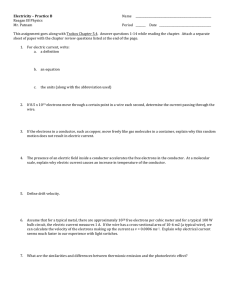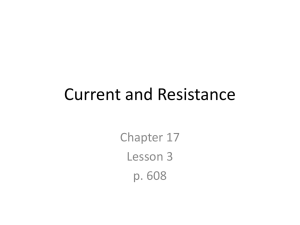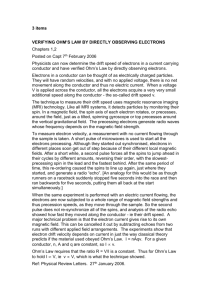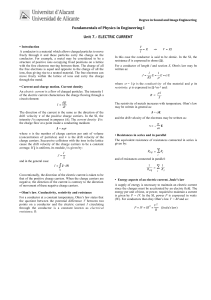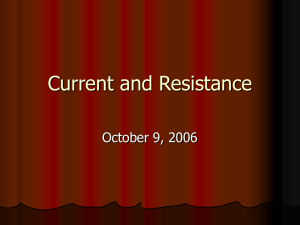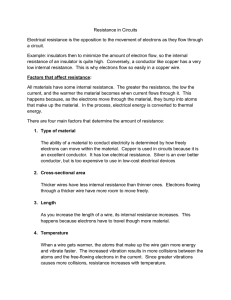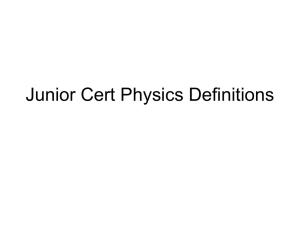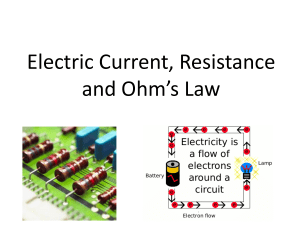Electric Currents Current
advertisement
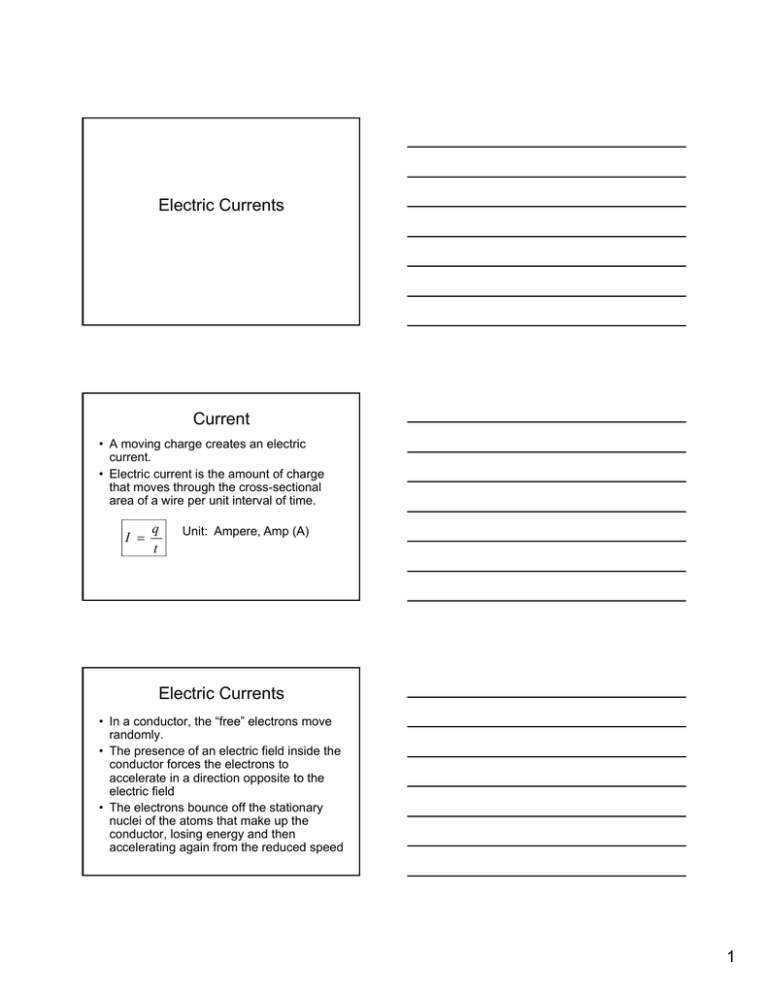
Electric Currents Current • A moving charge creates an electric current. • Electric current is the amount of charge that moves through the cross-sectional area of a wire per unit interval of time. I q t Unit: Ampere, Amp (A) Electric Currents • In a conductor, the “free” electrons move randomly. • The presence of an electric field inside the conductor forces the electrons to accelerate in a direction opposite to the electric field • The electrons bounce off the stationary nuclei of the atoms that make up the conductor, losing energy and then accelerating again from the reduced speed 1 • The overall average forward velocity of the electrons is known as the drift velocity • For a typical wire with 1 A of current the drift velocity is 6x10-4 m/s Resistance • Resistance is defined as the ratio of potential difference (voltage) to current. R V I Units: VA-1 = Ohms (Ω) • Resistance depends on: – Length – Cross-sectional area – Material – Temperature • We can calculate resistance as follows: R L A ρ – resistivity (depends on material) L – length A – cross-sectional area 2 • There are special electronic devices called resistors • Resistors are designed to resist electron flow (not how many, but how much energy they have) • The electrons lose energy (and therefore potential) when passing through a resistor • So there is a potential difference across the resistor Ohm’s Law • Ohm’s law is a rewriting of the definition of resistance: V IR • If something follows Ohm’s law it is said to be ohmic. I V • Most materials obey Ohm’s law at low temperatures. 3


